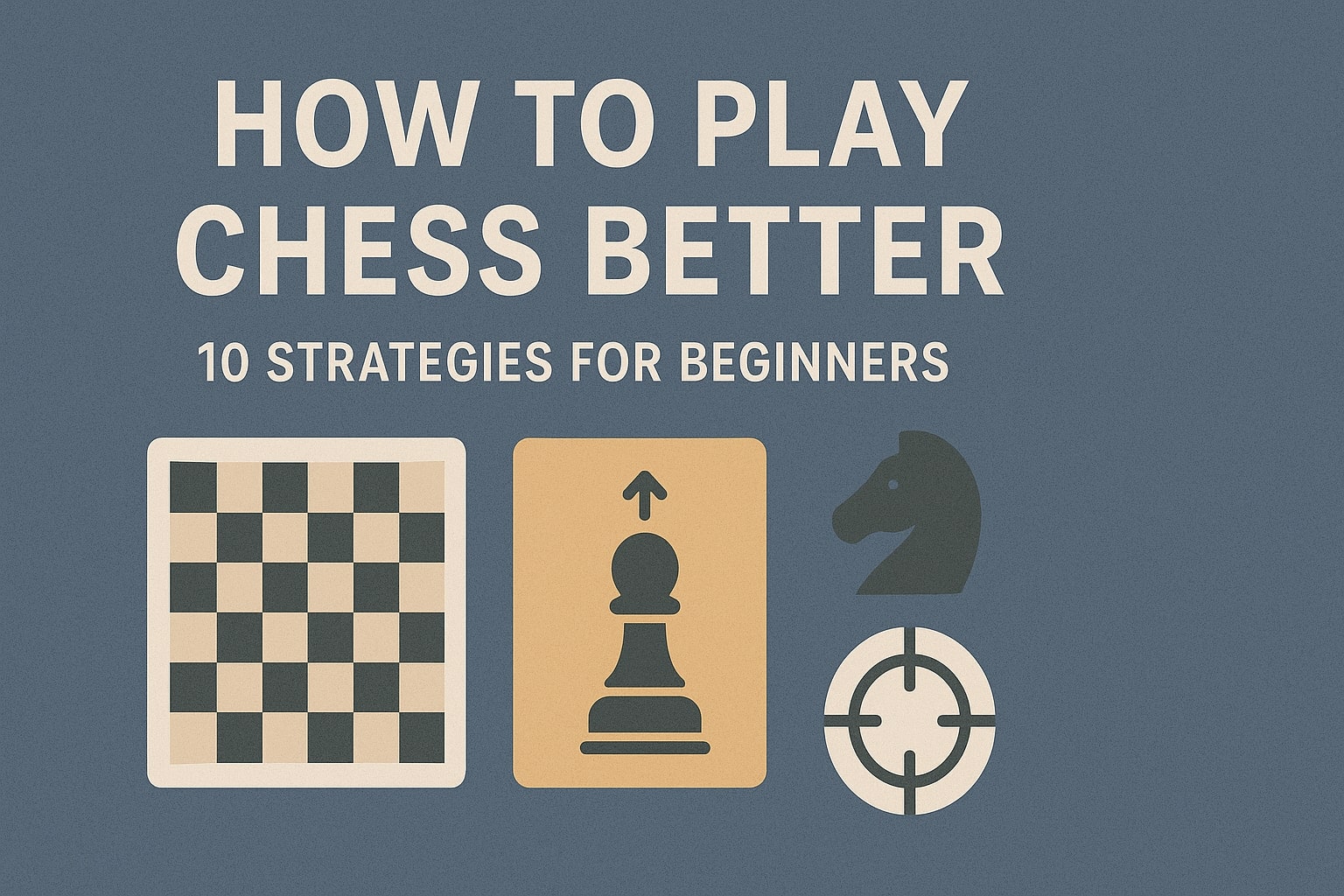What Are the Essential Chess Strategies Every Beginner Should Know?
The foundation of learning how to play chess better starts with mastering fundamental strategic principles. Control the center of the board with your pawns and pieces, as this gives you more options and limits your opponent's mobility. Develop your pieces before launching attacks - knights and bishops should come out early to active squares where they can influence the game.
Castle early to keep your king safe, and avoid moving the same piece multiple times in the opening unless absolutely necessary. Connect your rooks and activate them on open files or ranks. These basic principles form the backbone of good chess play and will serve you well regardless of your current skill level.
📺 Featured Video

Every Chess Tip Explained In 10 Minutes
by Chess Thugs
- Control the Center - Place pawns on e4, d4, e5, or d5 early to dominate the board's most important squares.
- Develop Knights Before Bishops - Knights are trickier to position well, so bring them out to active squares (usually f3, c3, f6, c6) before bishops.🐴 Knight placement tip: I used to struggle with knight moves until I learned they love to be on advanced squares like f5 or d5. They're like outposts that control tons of squares!
- Castle Early - Get your king to safety within the first 10 moves, preferably kingside for beginners.🏰 Safety first: I learned this the hard way after losing countless games to back-rank mates. Now I castle within the first 10 moves religiously - it's saved me so many times!
- Don't Move the Same Piece Twice - In the opening, develop all your pieces before moving any piece a second time unless forced.
- F-Pawn Weakness - Avoid moving f2/f7 pawns early as they're only defended by the king and create vulnerabilities.
- Create Pawn Chains - Support your pawns with other pawns to create strong structures that control key squares.
- Activate Your Rooks - Place rooks on open files (columns without pawns) or behind your own pawns that might advance.
- Look for Tactical Patterns - Learn basic tactics: pins (attacking a piece that can't move), forks (attacking two pieces at once), and skewers (forcing a valuable piece to move).🧩 Pattern recognition: Once you start seeing these patterns, chess becomes like solving puzzles! I spend 10 minutes daily on tactics puzzles and my rating jumped 200 points in 3 months.
- Trade When Ahead - If you have more pieces than your opponent, trade pieces to simplify toward an easier endgame.
- Think in Candidate Moves - Before moving, identify 2-3 possible moves and calculate each one's consequences.
How Do You Improve Chess Tactics and Calculation Skills?
Tactical awareness is crucial for anyone serious about learning how to play chess better. Start by solving 10-15 tactical puzzles daily, focusing on common patterns like pins, forks, skewers, and discovered attacks. Don't rush through puzzles - take time to visualize the position and calculate variations before making your move.
Practice calculating 2-3 moves ahead consistently before attempting deeper calculations. Look for checks, captures, and threats in every position, as these forcing moves often lead to tactical opportunities. Regular tactical training sharpens your pattern recognition and helps you spot winning combinations during actual games.
📺 Featured Video

Top 50 Chess Principles for All Levels: Beginner to Advanced
by Chess Vibes
What's the Fastest Way to Improve Your Chess Rating?
The most effective approach to rapidly improve at chess combines focused study with regular practice. Analyze your games after each session, identifying mistakes and missed opportunities. Focus on one area at a time - whether it's opening principles, endgame techniques, or tactical patterns - rather than trying to improve everything simultaneously.
Play longer time controls when possible, as this allows you to think more deeply and avoid blunders. Study master games in your preferred openings to understand typical plans and piece maneuvers. Most importantly, be patient with your progress - chess improvement comes in waves, and temporary plateaus are normal parts of the learning process.
